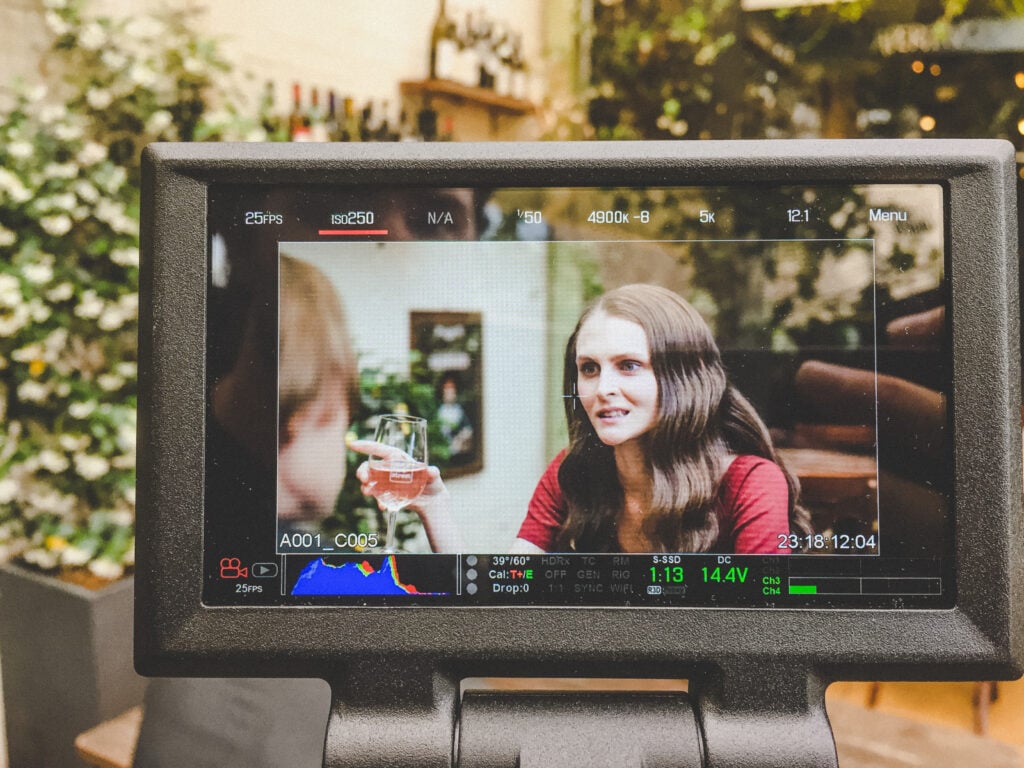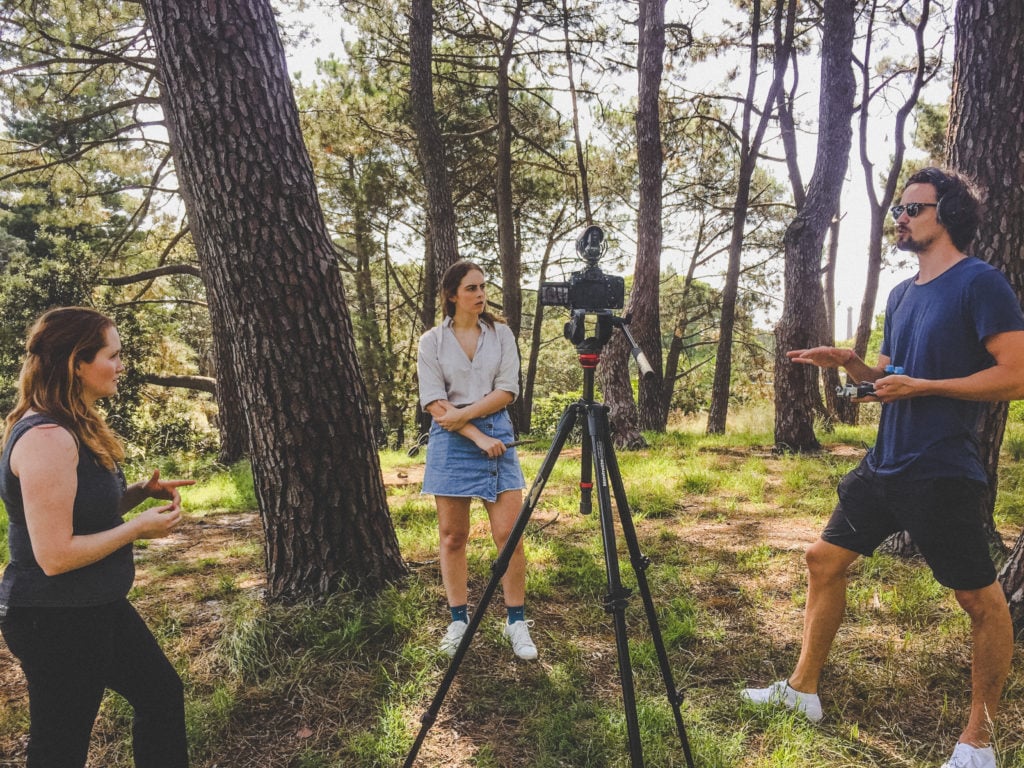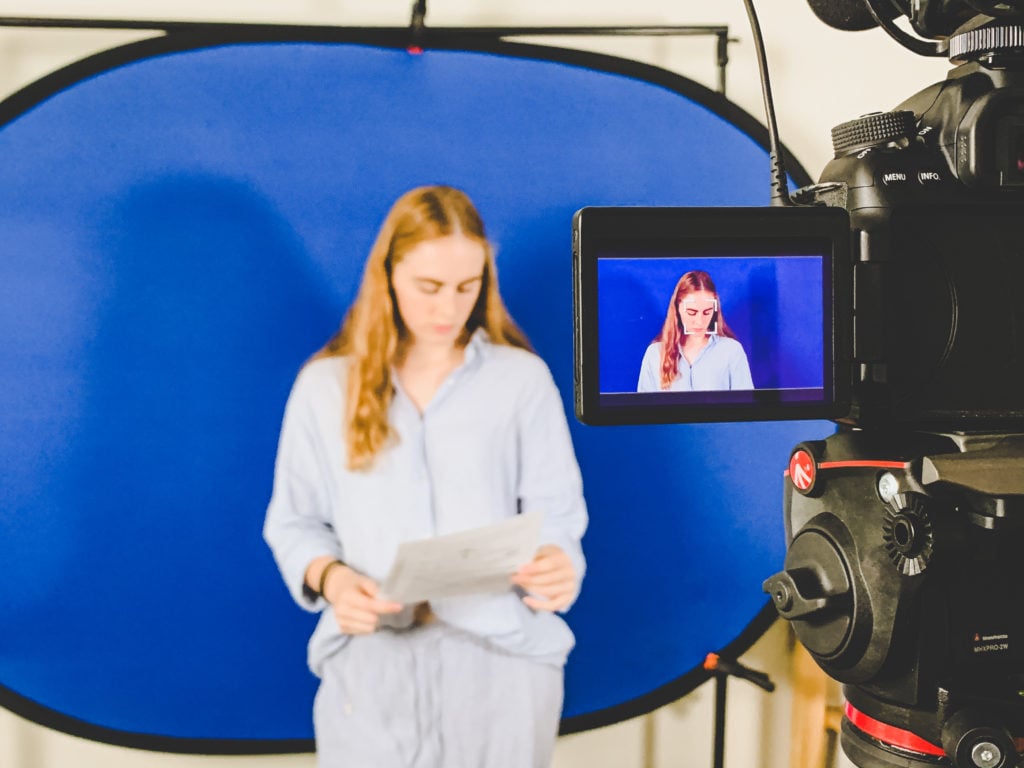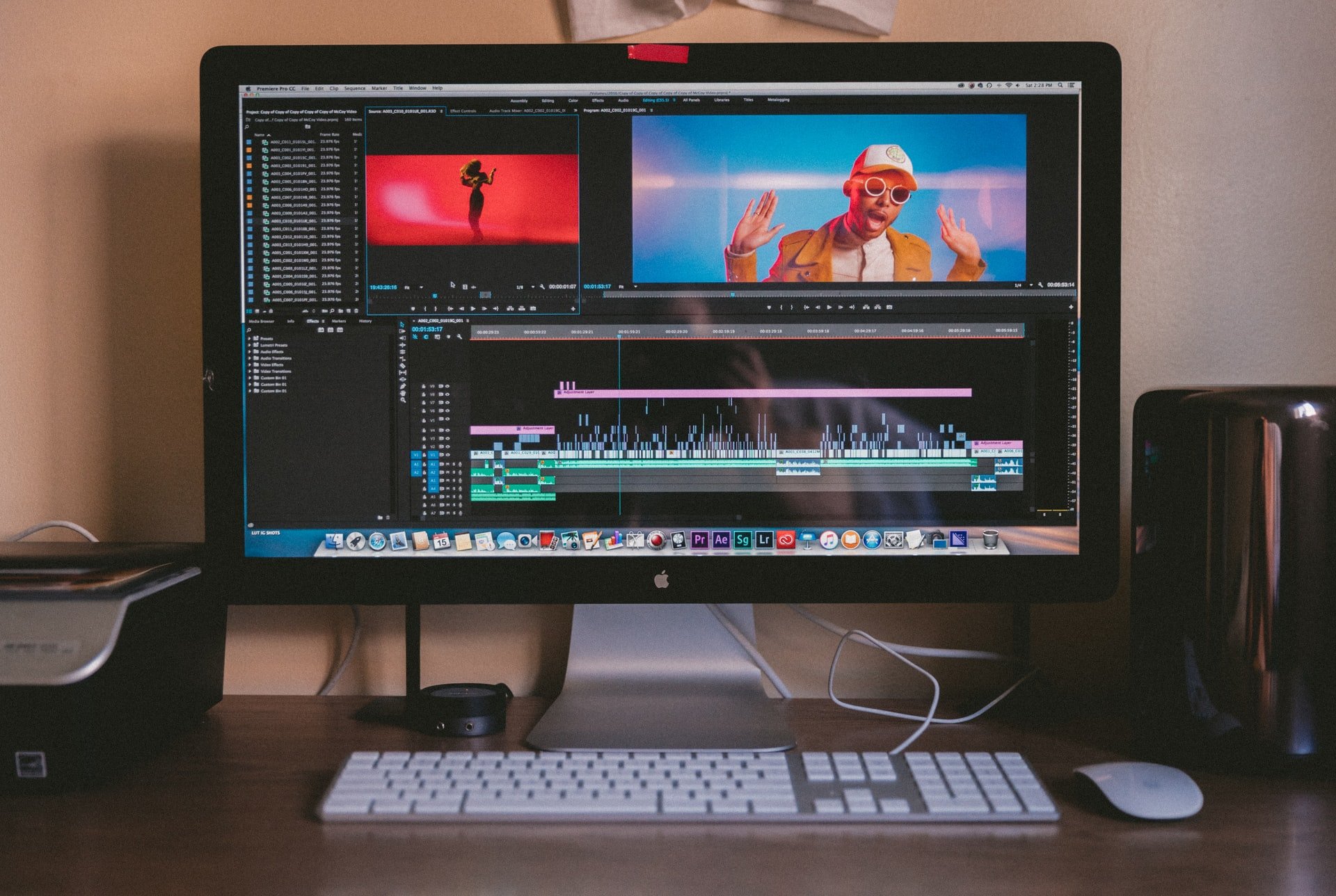
Ultimate Showreel Guide
Welcome to our definitive guide to actor showreels. We’ll cover the importance of a showreel, finding a great scene and right down to editing it all together.
Already have a showreel? Here’s why your showreel probably sucks.
Why are showreels so darn important?
Besides your headshot, and perhaps your CV/Resume, a showreel is an actor’s only calling card. To put it simply – you will not get auditions without a showreel. A casting director wants to see your work before they spend 15 minutes with you in their office. Basically, they need to know you can act. So not only is it important to have a showreel full stop, but it’s also important that your showreel is working for you.
How do I make a showreel?
You have three main options here, or you can employ a combination of all three!
Option 1# Showreel Company
There’s some great showreel production companies out there, and… some not so good ones. If you’re going to employ a showreel production company to make your showreel from scratch be prepared to dish out a decent sum of cash – these services aren’t cheap. 99% of the time you’ll end up with really slick looking footage, but the quality of the script, or the other actor will take away from that. It’s a lot of money to spend on something you might not be 100% happy with in the end. So make sure you do a tonne of research on these companies, check out their previous work and be sure that your hard-earned money is going to be worth it.

Option 2# DIY Showreel Production
Your next alternative is grabbing a bunch of filmmaker/actor friends together and getting them to help you out making your own showreel. This will require a lot of proactivity and hard work on your behalf – but it can be done! This means you can work to your own schedule, and your own budget. All you’ll need is a great script, a camera operator, a sound operator and another actor to act with. The camera operator and the audio person will ideally have their own equipment, otherwise you can rent equipment you need from a rental house. Now, because they’re your mates, you can either pay them in beer, or throw them some cash to say thanks.

Option 3# Self Tape Showreel
And the third option is the good old self-tape showreel. This is by far your cheapest and easiest option. I always recommend actors who are new to the industry, or who are strapped for cash, go with this method. Hit up a local self-tape studio, and mention you’re looking to put down 2 or 3 scenes for a showreel. They’ll know what you need, and you just have to show up! This option is easier, but it means you might need to be more mindful of the scenes you are choosing. Because this option will just be you on the screen, you might choose a scene that’s shorter, faster paced, and with minimal action involved. We don’t want to be seeing millions of props and jumping up and down on screen in a self-tape. We need to be tactical about how we convey meaning, without distracting. But, more on that later…

And of course, you might end up doing a combination of all three of these options! Now that you know which direction you’d like to take with your showreel, here’s what to do next.
Choosing a Showreel Scene
Scene or Monologue?
There’s nothing wrong with doing a monologue for a showreel, however it’s hard to come by a short, sharp and slick monologue that works on screen. If you’re feeling creative and up to the task, go for it. But if you’re wanting to keep it simple, a showreel scene is a sure thing.
Where to find scenes?
Unfortunately a Google search just doesn’t cut it these days. The showreel scripts you’ll come across on the internet will be likely over-used, old and too recognisable. I encourage you to do some research, AKA are you ready for a fantastic excuse to watch more Netflix? First, make a list of some actors that you admire, and who are of similar look and vibe to you. Are you in your late 20’s, female, brunette, quirky, American and enjoy comedy? Perhaps check out Zoe Deschanel’s work, or Alison Brie. Or are you in your 40’s, male, rough, Aussie and enjoy dark thrillers and drama? Check out some of Ben Mendelsohn’s work, or Guy Pearce. For showreels, we’re going to be playing to our strengths, and in order to do that, you need to know what your strengths are. Ask some mates or your family for help here if you don’t know where to begin defining your “type.” Put together a watch list on IMDB and start watching! Check out film and TV in your favourite genres, with actors in your type range. If you come across a scene that you like, pause it, and scribe out the words. It’s really as simple as that!

Choosing the right scene
Now that you’ve got a list of around 5 or 6 scenes that you like, it’s time to choose the right one for you. Go with your gut here – which scene gets you the most excited, the most fired up? And go with that one. Here are some things to look for:
- Great dialogue: a showreel scene shouldn’t be too wordy, but it also should have a tiny bit of poetry and flow to the dialogue. It should make you excited to get to say these lines and rehearse this work!
- Strong relationship: whilst hard core break up scenes aren’t encouraged, it’s imperative that the two characters in the scene have some relationship. A scene where someone’s walking into a grocery store, and interacting with the store clerk is largely uninteresting. Unless, perhaps that film was written by Martin McDonagh… Scenes where character’s are meeting for the first time work great, It’s a fine line, but trust your instincts. What makes your scene interesting to watch?
- Character arc: Ideal showreel scenes also have some arc, even if it’s just a small one. The character should start somewhere, and end somewhere else.
- Context: it’s very hard for an audience to get on board with a scene when they have no clue what is happening. Part of that will come down to your acting, and making your choices nice and clear and the rest will be written on the page. So when you’re reading the scene out loud, try and approach it as if you’ve never heard it before – what questions arise? What is unclear? Are there any confusing elements? Avoid having too many big questions. This is why scenes between characters who are meeting for the first time often work really well – there is no context and we’re okay with that.
- Length: And finally, make sure your scene is not too long. 1 – 1.5 minute scenes are great. You don’t want your overall edited showreel to be more than 3 minutes ideally, so choose some nice short scenes which you can splice together nicely.
Here are some things to avoid:
- Too much action: for obvious reasons, scenes which involve combat, weapons, stunts and supernatural elements are strong discouraged. Out of context, and with no special effects or music to back you up, you are guaranteed to look a little silly… So please avoid Lord of the Rings and Vampire Diaries.
- Long chunks of text: Make sure both character’s have relatively even amount of dialogue – you don’t want to be left standing on screen listening to the other character for 2 out of the 3 minutes in your showreel.
- Accents: Unless you are looking to do a scene specifically to show off a particular accent you’re working on, always do your showreel in your NATURAL ACCENT.
- Obscure references: some scenes you might want to avoid because they reference a particular event, place or thing that the audience has no idea about. It’s going to make it hard to connect with your character and the situation. Keep it simple.
- Big challenges: If you’re naturally not a comedic person, a showreel is not the place to try and figure out if you have comedy chops. Save that for the classroom. Choose scenes that suit you, and are within your range as it stands right now. If you love romance and drama, and you’re good at it, chances are you’ll nail a romantic/drama scene. Play to your strengths at all times.
You have license to edit!
If you’ve found an amazing scene, but there’s a frustrating reference in there, or not enough context – don’t be afraid to edit! You have creative license here, it’s your showreel. Edit out that reference, or change it to something relevant. Trim some dialogue, or add some more dialogue in for context. But of course, be careful. Some actors are gifted writers and storytellers as well as performers, but writing isn’t everyone’s strong suit. Ask an acting teacher, or a writer friend to help you out if you’re unsure.
Finding a great scene partner
Now you’ve locked in a great scene, you need to find a great scene partner to match! This is your chance to be a casting director, and finally have some say in a casting process! First and foremost, they must be a fantastic actor. You want someone who’s going to push you, and make you work. Also find someone whom you get along with, it makes the whole experience much more enjoyable. And finally make sure they suit the character – in terms of type and age range. If you’re struggling, don’t give up – just keep searching. You might not think it important to find the best scene partner, but trust me, it makes all the difference! If you’re going with Option 3#, and making your own self-tape showreel – then you need to find a great reader – this person should also be a great actor, and definitely not your mother! Even though they’re not on screen, their performance will ultimately feed into and affect yours.

Prepare thoroughly
If you know me, you know I’m a huge advocate of extensive preparation. This applies to filmmaking, auditioning, and of course – showreels. Showreels can sometimes take weeks to plan, prepare, shoot and edit (particularly if you’re shooting your own reel). And that’s absolutely fine! Showreels are important, and important things deserve time and attention. Take the time to really dive deep into your scene work – we have literally tonnes of resources on breaking down scenes, developing characters, objectives, stakes, backstories, and more. So go forth and explore all of those resources to your heart’s content, and then put that work into practice. Whilst I don’t always recommend rehearsing your scene before you shoot, it’s definitely an option. And every actor is different. But to put it simply – just learning your lines is not enough I’m afraid.
Preparation also includes things like accent work, blocking, physical work and vocal work. You want to put all your efforts into this one, and really make it count. It’s important not to rush it, and to enjoy the process. Treat it like you would an acting gig.
Read on if you’re producing your own showreel, otherwise jump to the conclusion…
Post Production
Flow/Editing
Not everyone knows their way around Premiere or Final Cut, so it might be worth getting someone to edit your showreel together for you. Whilst yes, this is an additional cost, iMovie doesn’t quite cut it anymore (literally).
Make sure that your showreel is upbeat, fast-paced and has a nice flow. It shouldn’t feel like a chore to get through, but it also shouldn’t be too fast and confusing to watch. It should have a nice rhythm and flow well, and each individual clip should be roughly similar in length. It’s a bit jarring to have a 15 second clip, and then a 2 minute clip, and then a 30 second clip. Always make sure your best work is first – and if there’s any material you’re not sure about, or feel like didn’t turn out too great, then leave it out altogether. Your showreel is your best work, so you need to be honest with yourself and always make sure you’re putting your best foot forward.
Music? Sometimes. On a case by case basis – sometimes music can really add to the production value and enhance the flow and intrigue of a showreel. So yes, if done well, and no, if it’s distracting and takes away from your performance instead of enhancing it.
We want to avoid montages altogether please! I’ve seen a few crazy showreels which are 5 minute compilations of various acting scenes, TVC’s, presenting jobs and even selfie’s from the past 10 years, underscored by very uninspiring pop music tracks. Please, for the love of Dionysus, no.

Length
No showreel should be longer than 4 minutes. I don’t care if you’re Jennifer Aniston, keep it under 4 minutes. Your sweet spot is around the 2.5 minute mark. And most likely casting directors and agents won’t watch longer than 30 seconds anyways. It’s for this reason, that I always encourage people to find scenes that are no more than 1.5 pages long for their showreels. There’s no point doing a 4 minute scene, you’ll only be able to use 1 minute of it in the edit.
An outside eye
Get a friend, or mentor or an agent (if you have one) to look over your showreel for you, and give you some notes. They’ll be able to give you an objective view of your reel, and help you find the best edit.
Conclusion
A showreel is one of your most important assets as an actor, but at the same time, try not to put too much pressure on yourself, otherwise you’ll never do it. I’ve known actors who’ve told me they “need to update their showreel” for months on end, and they never ended up doing it. Make the commitment to yourself, set a date, and work towards it. There is nothing more daunting than putting yourself out there, and I totally get that. But that’s part of the job of being an actor. Your showreel should be an accurate representation of your talent and comfortability on camera. It should give casting directors, agents, directors, producers etc. a solid idea of who you are as an actor. It’s for this reason that showreels are imperative assets, but remember that it’s not meant to be “perfect”. There is no such thing as a perfect showreel. Aim for a great showreel, aim to do your best, play to your strengths and you’ll be okay.
For affordable showreels in Sydney, click here.

Leave a Reply